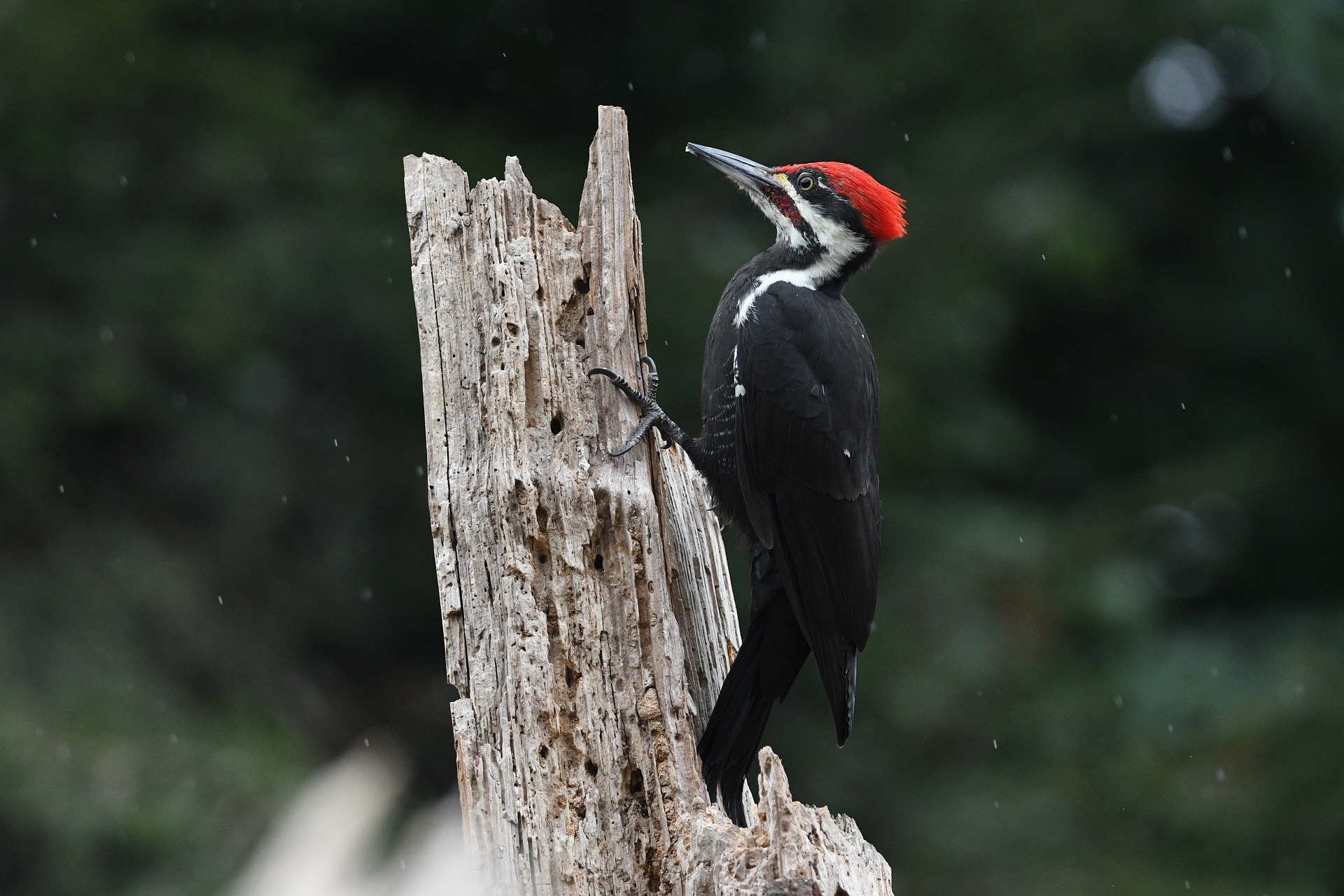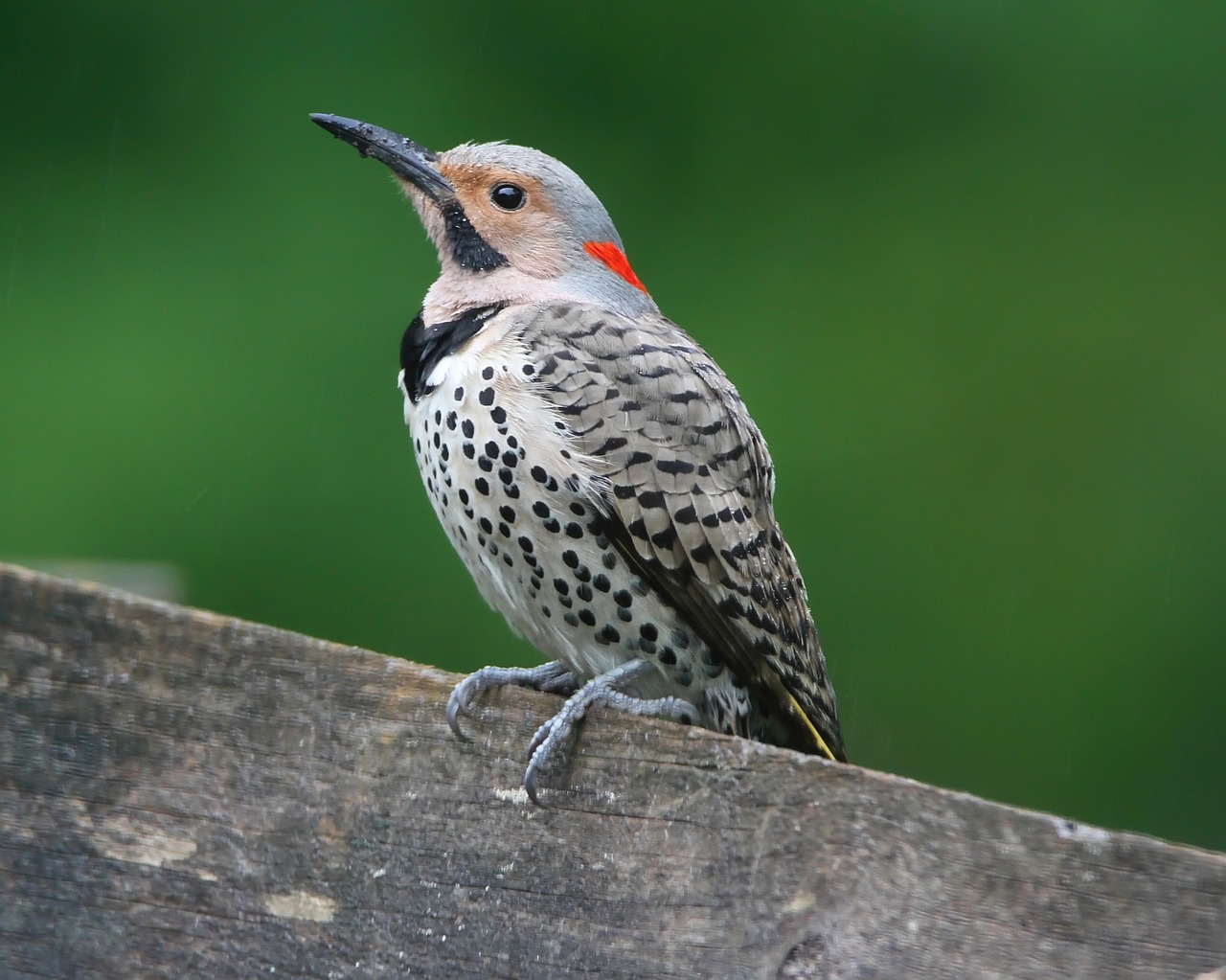
Image by Veronika Andrews from Pixabay
Have you ever woken up in the morning to the strange sound of drumming or tapping? Perhaps it’s a woodpecker! These beautiful birds like to create drumming or tapping noises during the beginning stages of their mating and nesting season (lasting a few weeks), often using the metal chimney caps to create a unique and loud sound. Some birds use their voice to call out for mates, woodpeckers like to use the drum!
Although they may look colourful and pretty, these birds can cause not only annoyance in homeowners but also serious damage! If they choose to start to bore into the side of your home, it can be tricky to get rid of them and can even bring up underlying issues that you may not have been aware of, such as carpenter ants that the woodpecker is feeding on in the inside of your walls. Woodpeckers are protected under the Migratory Birds Convention Act. They are classified as ‘migratory insectivorous birds”. Woodpeckers are typically 18 to 48 cm in length. They all have stout pointed beaks and very long tongues that wrap around the inside of their heads, and are best suited for drilling holes in trees. Often the males of the different kinds of woodpeckers have a little red colouring on their heads. These birds cannot be killed and their eggs and nests cannot be destroyed especially during the months of April to August.
The greater Calgary area is home to five different species of woodpeckers: The downy woodpecker, the hairy woodpecker, the common red and yellow shafted flicker, yellow-bellied sapsucker, and the pileated woodpecker.
Homeowners that choose to have wood siding are often the most at risk as the pileated woodpecker likes to bore into it. You can recognize the pileated woodpecker, like the one featured in this article with the red tuft on its head and it is around the size of a crow. Some species of woodpeckers like the Northern Flicker, prefer properties with stucco. They like the sound they create when drumming. Woodpeckers like the pileated, often drum to defend or establish their territory, or to warn of intruders, and also for attracting mates.
So woodpeckers are protected but also damaging my home, what can I do? Well, some control may be achieved using frightening devices such as strips of aluminum or reflective tape that can be hung from branches of the damaged tree or home. As well as large reflective mylar balloons, or old CD’s hung where they can clang together can be frightening for the birds. Nesting can be discouraged by blocking the entrance to the area before the birds have arrived in the spring. Lastly, it will be important to check the home to see if there is an insect infestation that is causing the woodpecker to feed on the side of your home. If we remove their food source, it can encourage them to move on. If the woodpecker has invaded a larger area or is unwilling to move, we can also introduce a sound machine that emits the noise of a woodpecker in distress. This creates a sense of danger for nearby woodpeckers.
It’s important to repair damage caused by woodpeckers as it can encourage infestation of insects and other wildlife by providing an entry way into the structure. It can also create an opportunity for water to enter these holes and cause extensive damage and mold growth. By repairing the holes, you also discourage them from returning and continuing the damage.
If you are dealing with a woodpecker and looking for more information, Absolute Pest Control can provide a free, no obligation quote. Call us today at 403-238-7400 or email us at info@apcpestfree.com to speak to one of our knowledgeable technicians.

Image by Naturelady from Pixabay



